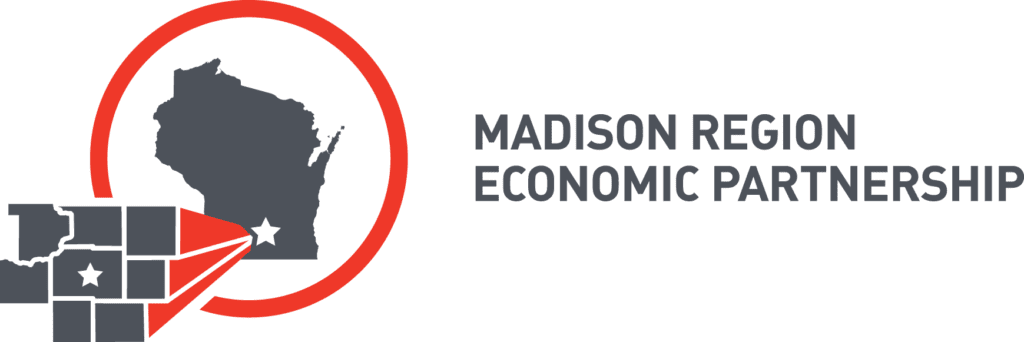Tonnetta Darcel Carter has spent years solving complex problems in finance and logistics, including as an Army chief of staff involved in some of the earliest troop withdrawals from Afghanistan.
Madison Region Economic Partnership, or MadREP, this summer named Darcel Carter as its chief strategy officer for the organization’s new Bridge Wisconsin initiative, which aims to provide economic support and opportunities to rural businesses and entrepreneurs of color.
MadREP is an economic development agency spanning eight counties in south central Wisconsin, including Dane County. The organization provides technical support and opportunities to emerging and minority-owned businesses, attracts businesses to invest in the Madison region and expands export and foreign direct investment opportunities for existing local businesses.
Darcel Carter previously worked with local venture firm gener8tor and served as development director for the Medical College of Wisconsin’s Hope to Health Campaign. She is also the founder and CEO of alternative asset consulting firm Carter Wilson Group, which provides venture and economic development strategies.
Darcel Carter spoke to the Cap Times about her experience in finance and her plans for the Bridge Wisconsin initiative.
First off, could you tell me a little bit about yourself?
My educational background is in finance. I went to (UW)-Whitewater for undergrad. During my second year in school, I joined the Army National Guard, originally as an engineer, and then later became a chief of staff.
During that time, I deployed twice. I spent some time in the Middle East traveling across Afghanistan, where I really focused on demobilization — bringing our troops back home — in 2014. We sent probably close to 20,000 troops home during my time over there.
I then was deployed to South Korea in 2018 under President Trump. That was really what we call a real wartime analysis. So if things were to go haywire during President Trump’s time in North Korea what role would the U.S. play, and what would that involvement look like?
To be at the age that I was, it was very eye opening and (I was) learning how to be a strategic thinker and find creative ways to solve very, very complex problems.
I was (later) appointed to the Board of Veterans Affairs for the state of Wisconsin under Gov. (Tony) Evers, and I’ve been in that capacity since 2019. My bread and butter is really, how do we support our veteran families and our veterans as they’re transitioning to civilian life? That could be supporting veteran entrepreneurs, veteran-owned businesses and things of that nature.
Could you describe MadREP’s new Bridge Wisconsin initiative? What are its goals?
Bridge Wisconsin’s really reflective of our mission to develop a dynamic economy where people and businesses thrive. … We’re looking to improve the quality of life through a community-based investment.
Looking at collected data and surveys across the region, we are seeing what our region’s greatest needs are. That’s when we really identified our top five priorities, and those are housing, early childhood education, economic equity and investment, workforce development and sustainability.
Why did you decide on those five different priorities?
Digging into two of our priorities — housing, for example — studies project there will be (a need for) an estimated 200,000 (new) homes across the state by 2030.
What we’re seeing is that homeownership is very high for our aging population, and that’s at about 81% for those who are 65 and older. As they’re looking to downsize, but not necessarily want or need assisted living, there’s a shortage of accommodation to offer the amenities they desire.
There’s a very low transition for new families and workers. Housing is just not available across the spectrum. In our region we’re looking to really increase homeownership and close those workforce housing gaps by investing in quality, affordable homes.
We plan to do that by partnering with organizations to train and support developers in our counties to really build in their respective areas. That can be through an array of programmatic and/or funding options.
Digging into the economic equity and investment component — which I’m very passionate about — people of color make up approximately 40% of the U.S. population. Yet, these groups own roughly 20% of businesses. Over the past five years, these groups have, I want to say, had an increase of about 22% (in) revenue, yet only 27% of them get fully approved for financing, which is very, very interesting.
Looking at a snapshot of Wisconsin itself, we are ranked as the fourth worst state for entrepreneurs of color. (Wisconsin is actually ranked second-to-last in economic equality, according to a study from WalletHub.)
These groups make up about 21% of our state’s population, and only own roughly 7.4% of our startups and businesses across the state.
At Bridge Wisconsin, we are really looking to support those small and technical businesses by providing real capital and technical resources, which can include capacity building for those entrepreneurs across our region and the state as a whole.
What are some things you’re going to do to close the gap between the rural and urban area in the eight counties?
I think that’s really why we’ve established these five priorities. Looking at, let’s say, workforce development, what you’re seeing across geography is you really serve just to build a robust talent pipeline inclusive of new workers, as well as how we work to upskill existing workers.
So, it’s how we’re providing training across those industries that we’re seeing are very high in our region.
How can we look at, say, cybersecurity, at IT, at manufacturing? How do we give our residents the tools that they need to be successful in these careers? How do we educate, train and retain a workforce that meets current and projected business needs?
We’re seeing that those are the needs across both geographies. Now, how can we help these groups … to really find advancement?
What does the timeline look like for implementation of Bridge Wisconsin? It’s launching in the fall, correct?
Yeah. With anything of this magnitude, we’re not going to launch each priority all at once; we’ll begin to roll them out as they’re being developed. We’re looking to roll out a few of our priorities over the next three to four months. For sure, in the fall, we’ll have at least one priority launched and up and running if things go as planned. Conversations are going really well, so fingers crossed on hitting the ground running in the next couple of months.
What are the things you’re starting off with?
We’re starting off with our economic equity and investment priority.
What are your plans for raising money for these initiatives or getting money sorted out?
Without sharing way too much, we’re having conversations with some really cool organizations about bringing some potential outside capital to Wisconsin for our city entrepreneurs, as well as working with folks who are already doing the work here, amplifying what they’re already doing.
We’ve identified some great potential funding sources for some of those initiatives already.
What do you hope the business investment landscape for this region will look like in the next few years with the help of Bridge Wisconsin?
How do I answer that question? If I could get everything I want and have everything go my way:
I think the landscape, for one, would have more tech-enabled businesses operating for people of color. We would have an increase in revenue and resources in these counties, especially looking at people of color as well as those who are in areas geographically that just don’t have the access to that funding.
Really, oh, my gosh, it will look like just an increase in the millions (of dollars) for entrepreneurs in southwest Wisconsin.



